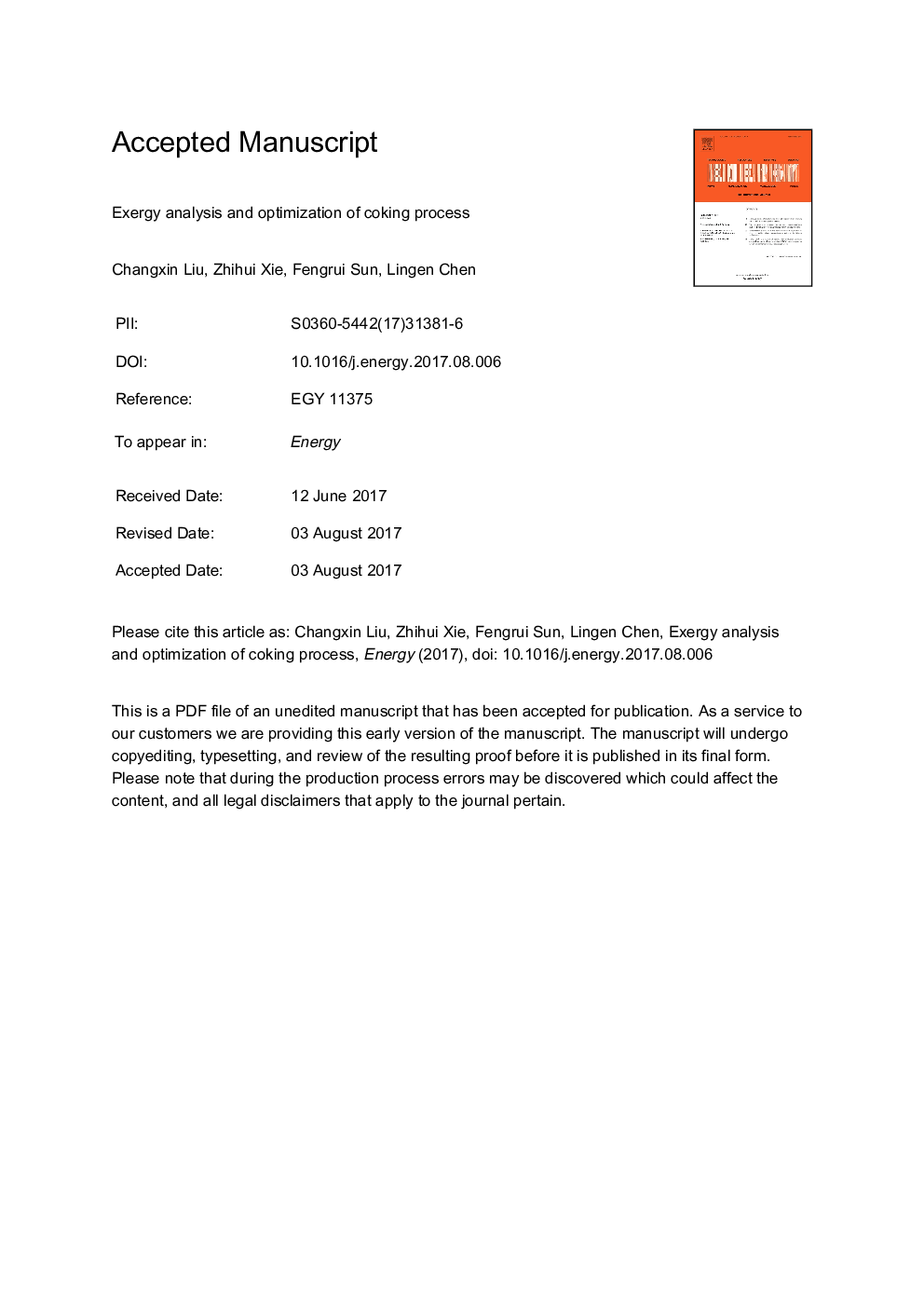| Article ID | Journal | Published Year | Pages | File Type |
|---|---|---|---|---|
| 5475630 | Energy | 2017 | 52 Pages |
Abstract
Taking the exergy loss minimization as the optimization objective, an optimization model of coking process is established based on the material balance and energy balance. The optimization problem is solved with the practical production data of a coking plant. The minimum exergy loss and the optimal design parameters are obtained. Performances of the mixed coal before and after optimizations are compared. Influences of design variables on minimum exergy loss are investigated. The results show that the minimum exergy loss is 3602072.2Â kJ/t which decreases by 6.99% compared with that before optimization. Compared with the heat loss minimization objective, the optimization with the exergy loss minimization improves the exergy saving by 2.95%. Increasing the dosage of gas coal and synchronously reducing the dosages of the other coals can reduce the exergy loss of coking process. When the mixture ratio of blast furnace gas to coke oven gas is near to 7:1, the minimum exergy loss is obtained. Improving the desulfurization technology can relax the upper bound of sulfur constraint, and indirectly reduce the exergy loss. In practical production, the dosages of raw materials should be in the ranges where the exergy loss changes more slowly and close to the optimal values.
Related Topics
Physical Sciences and Engineering
Energy
Energy (General)
Authors
Changxin Liu, Zhihui Xie, Fengrui Sun, Lingen Chen,
